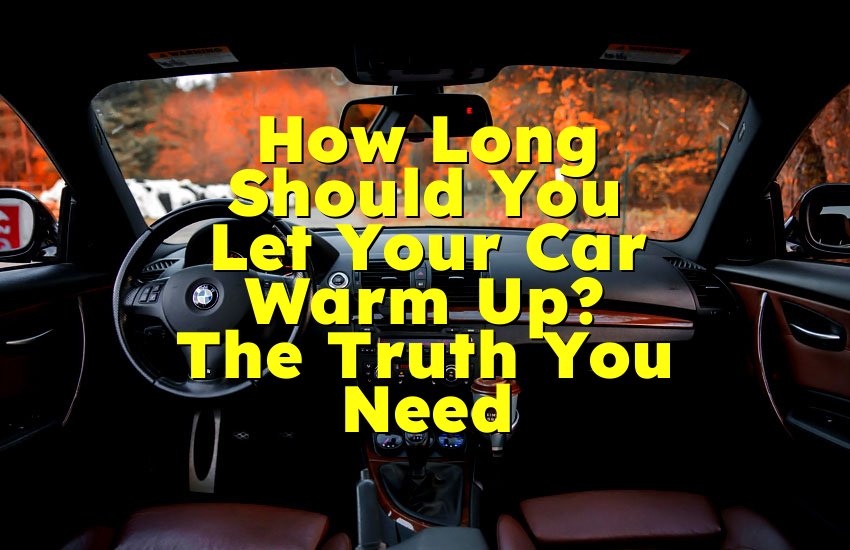As an Amazon Associate, I earn from qualifying purchases at no extra cost to you.
Car Revs But Won’t Move: Troubleshooting Tips
Have you ever been in a situation where you start your car, it revs like a beast, but it refuses to move? This frustrating experience can leave anyone feeling helpless and confused. Your car may sound powerful and ready to go, but when you put it into gear, it stays still. Understanding why your car revs but won’t move is essential for every car owner. This guide will explain the possible causes, how to diagnose the problem, and what you can do to fix it.
Common Reasons Why Your Car Revs but Won’t Move
When your car revs but won’t move, there can be multiple reasons behind this behavior. Below are some common causes that you should be aware of.
Transmission Problems
One of the most common reasons your car might rev but not move is a problem with the transmission. The transmission is a vital part of your vehicle that transfers power from the engine to the wheels. If it fails, your car will not be able to move even though the engine is running. There are two main types of transmissions: automatic and manual.
In an automatic transmission, fluid helps shift gears. If there is a leak in the transmission fluid, it can cause the transmission to malfunction. Low fluid levels or contaminated fluid can also lead to shifting problems. If you notice your car revving high without moving, check the transmission fluid level. You can usually find the dipstick under the hood; it is often labeled and easy to locate.
Manual transmissions also have their own set of issues. If your clutch is worn out, it may not engage properly, leading to the engine revving without transferring power to the wheels. If you feel the clutch pedal is softer than usual or the gear stick feels loose, it could indicate a problem.
Engine Issues
Another potential issue could lie within the engine itself. The engine is the heart of your car, and any malfunction can lead to performance problems. For example, a lack of power could result from issues like a dirty air filter, a failing fuel pump, or clogged fuel injectors. When these parts do not work as they should, the engine may struggle to generate the power needed to move the car.
If you suspect engine problems, consider performing a routine maintenance check. Inspect the air filter and replace it if it is dirty. Ensure that the fuel system is clean and functioning properly. Sometimes, using a fuel injector cleaner can help restore performance and efficiency.
Drive Shaft or Axle Problems
The drive shaft is an essential component that connects the transmission to the wheels. If there is a problem with the drive shaft, such as a broken or damaged part, your car may rev but not move. The drive shaft transfers the power generated by the engine through the transmission to the wheels, allowing your car to move forward or backward.
Similarly, the axle is critical for wheel movement. If your axle is damaged, it can lead to the same problem. Common signs of axle issues include unusual noises when driving, a shaking steering wheel, or difficulty turning. If you suspect a drive shaft or axle issue, it's best to have a professional mechanic inspect the vehicle to prevent further damage.
Wheel Issues
Sometimes the problem might not be internal but rather with the wheels themselves. If your car's brakes are stuck or if the tires are not engaging with the ground, it could cause your car to rev without moving. For example, if your parking brake is engaged or if there is a problem with the brake calipers, it can prevent the wheels from turning.
You should also check the tires for any signs of damage, such as flats or low pressure. Sometimes, debris can get stuck in the wheels, preventing them from moving freely. If you have ruled out all other issues, consider inspecting the wheel components or taking your car to a mechanic for a thorough check.
Computer System Malfunctions
Modern cars are equipped with advanced computer systems that control many functions, including the engine and transmission. If there is a problem with the car’s computer system, it may send incorrect signals to the engine or transmission, causing the car to rev without moving.
In this case, the vehicle may show warning lights on the dashboard, indicating a problem. If you have a diagnostic tool, you can check for any error codes that might provide clues about the malfunction. However, if you are unfamiliar with car electronics, it's best to consult a professional who can diagnose and repair the issue.
Insufficient Fuel Supply
A common reason for a car revving without moving is insufficient fuel supply. If the engine is not receiving enough fuel, it will struggle to generate the power needed for movement. This could be due to a clogged fuel filter or a failing fuel pump.
You can start by checking the fuel gauge to see if you have enough fuel in the tank. If you have fuel but still experience problems, inspect the fuel filter and replace it if necessary. If the fuel pump is malfunctioning, it may need to be repaired or replaced to ensure proper fuel delivery to the engine.
Electrical Issues
Electrical problems can also cause your car to rev without moving. For instance, if there are faulty connections or blown fuses, they could affect the performance of the engine or transmission.
Inspecting the electrical system can be complex, so if you suspect this is the issue, you might need to consult a mechanic who specializes in automotive electrical systems. They can conduct a thorough examination and help identify any wiring issues or faulty components.
Overheating Engine
If your car is overheating, it may go into a protective mode, preventing it from moving. An overheating engine can be caused by a variety of factors, including low coolant levels, a malfunctioning thermostat, or a failing water pump.
If your temperature gauge is in the red or you notice steam coming from under the hood, stop the engine immediately. Continuing to drive in this condition can cause serious damage. Allow the engine to cool down, then check the coolant level and other cooling system components. If you are unsure, seek professional help to diagnose and resolve the issue.
Faulty Gear Selector
The gear selector, or shifter, is responsible for allowing you to change gears in your vehicle. If there is a malfunction in the gear selector, it may not fully engage the gears, which can cause your car to rev but not move.
You may notice difficulty shifting gears, or the gear shifter may feel loose or unresponsive. If you suspect an issue with the gear selector, it’s best to take your car to a mechanic who can inspect and repair this component.
Lack of Maintenance
Lastly, a lack of regular maintenance can lead to various issues that might cause your car to rev without moving. Regular oil changes, fluid checks, and part inspections are crucial for keeping your car in good working condition. Neglecting these tasks can lead to problems that may result in performance issues, including the car revving without moving.
If you have not been consistent with maintenance, consider scheduling an appointment with a mechanic to catch up on any necessary services. Regular maintenance not only prevents issues but also prolongs the lifespan of your vehicle.

How to Diagnose the Problem
Now that you are aware of the potential causes of a car revving without moving, you might wonder how to diagnose the issue. Here are some steps you can take to troubleshoot the problem effectively.
Step 1: Check the Basics
Start with the basics. Ensure that your car is in the correct gear and that the parking brake is disengaged. If your car has an automatic transmission, make sure it is in "Drive" or "Reverse" as needed. If it is a manual transmission, ensure you are fully pressing the clutch when trying to shift gears.
Step 2: Inspect Fluid Levels
Next, check the transmission fluid levels. Open the hood and locate the transmission dipstick. Pull it out, wipe it clean, and reinsert it to check the fluid level. If the level is low, add the appropriate fluid. If it is dark or smells burnt, it might be time for a fluid change.
Additionally, check the coolant level to ensure the engine is not overheating. Low coolant levels can lead to overheating, which can prevent movement.
Step 3: Listen for Unusual Noises
While trying to move your car, pay attention to any unusual noises that may indicate a problem. If you hear grinding, whining, or clunking sounds, these could signal issues with the transmission, drive shaft, or other components. Make a note of these sounds, as they can provide valuable information for a mechanic.
Step 4: Look for Warning Lights
Check your dashboard for any warning lights. If you see the check engine light or any transmission-related warning lights, it indicates that there is a problem. Using an OBD-II scanner can help you retrieve any diagnostic codes that can point to the specific issue.
Step 5: Seek Professional Help
If you have performed the above steps and are still unsure about the problem, it's time to seek professional help. A certified mechanic has the knowledge and tools to diagnose and repair complex issues that may not be evident through basic checks.
How to Fix the Issue
Once you have diagnosed the issue causing your car to rev but not move, the next step is to fix it. Here are some potential solutions for the common problems mentioned earlier.
Fixing Transmission Problems
If the problem is related to the transmission, you may need to add fluid, replace a filter, or even rebuild or replace the transmission itself. If you notice any leaks, address them immediately to prevent further damage.
For manual transmission issues, consider replacing the clutch if it is worn out. If you are unsure how to perform these repairs, it is best to consult a professional mechanic.
Addressing Engine Issues
If your engine is the problem, routine maintenance is key. Start by replacing the air filter, fuel filter, and spark plugs as needed. Cleaning the fuel injectors can also help restore performance. If you suspect a more severe engine problem, such as a failing fuel pump, seek professional help to diagnose and repair the issue.
Repairing Drive Shaft or Axle Issues
If the drive shaft or axle is damaged, it may need to be replaced. This repair can be complex, and it's usually best handled by a professional mechanic who can ensure the work is done correctly.
Resolving Wheel Issues
If the brakes are stuck or the tires are not engaging, inspect the brake system for any issues. If the parking brake is engaged, disengage it. If the brake calipers are faulty, they may need to be replaced.
Inspect the tires for any damage or debris, and ensure they have adequate pressure. If you find any issues, it's best to take your car to a mechanic for a thorough inspection.
Fixing Computer System Malfunctions
If the issue lies within the car’s computer system, a mechanic can use diagnostic tools to identify and fix the problem. This may involve reprogramming or replacing faulty components.
Replenishing Fuel Supply
If you suspect insufficient fuel supply, check the fuel gauge and fill the tank if needed. If the fuel filter is clogged, replace it. If the fuel pump is not functioning, it may need to be repaired or replaced.
Addressing Electrical Issues
If you suspect electrical issues, check the fuses and wiring. Look for any loose connections or damaged wires. If you are unsure about how to handle electrical repairs, consult a professional who can help diagnose and fix the problem.
Resolving Overheating Engine Issues
If your engine is overheating, start by checking the coolant level and top it up if necessary. Inspect the thermostat and water pump to ensure they are functioning properly. If you suspect a more serious issue, such as a blown head gasket, it's crucial to seek professional help immediately.
Repairing the Gear Selector
If the gear selector is malfunctioning, it may need to be adjusted or replaced. A mechanic can perform the necessary repairs to ensure it functions correctly.
Prioritizing Maintenance
To prevent future issues, make sure to keep up with regular maintenance. Schedule oil changes, check fluid levels, and inspect key components regularly. This proactive approach can save you time and money in the long run by preventing small problems from turning into significant repairs.
I hope this guide has provided you with a clearer understanding of why your car may rev but not move. By identifying the potential issues and knowing how to troubleshoot and fix them, you can take better care of your vehicle and avoid future frustrations.
Are These Questions in Your Mind?
Is it safe to drive a car that revs but won’t move?
Driving a car that revs but won’t move is not safe. It can lead to further damage and potential accidents.
Can low transmission fluid cause my car to rev without moving?
Yes, low transmission fluid can cause shifting problems, preventing your car from moving while the engine revs.
Do I need to replace my transmission if my car revs but won’t move?
Not necessarily. Sometimes, adding fluid or making minor repairs can resolve the issue. A mechanic can provide a proper diagnosis.
Is it normal for my car to rev high when I start it?
A car may rev high momentarily when starting, but it should stabilize soon after. If it continues, it may indicate a problem.
Can a faulty fuel pump cause my car to rev without moving?
Yes, a faulty fuel pump can prevent sufficient fuel supply to the engine, leading to performance issues.
Do I have to go to a mechanic if my car revs but won’t move?
While you can perform basic checks, it's advisable to consult a mechanic for accurate diagnosis and repairs.
Is it possible for a car to rev in neutral and not move?
Yes, a car can rev in neutral without moving, as the transmission is disengaged from the wheels.
Can overheating cause my car to rev without moving?
Yes, an overheating engine may enter a protective mode that prevents movement to avoid further damage.
Do I need special tools to check my car's transmission fluid?
While a dipstick is common for checking transmission fluid, some vehicles may require specialized tools for access.
Is regular maintenance really that important for preventing issues like this?
Absolutely! Regular maintenance helps identify and address small problems before they escalate into significant issues, ensuring your vehicle runs smoothly.











